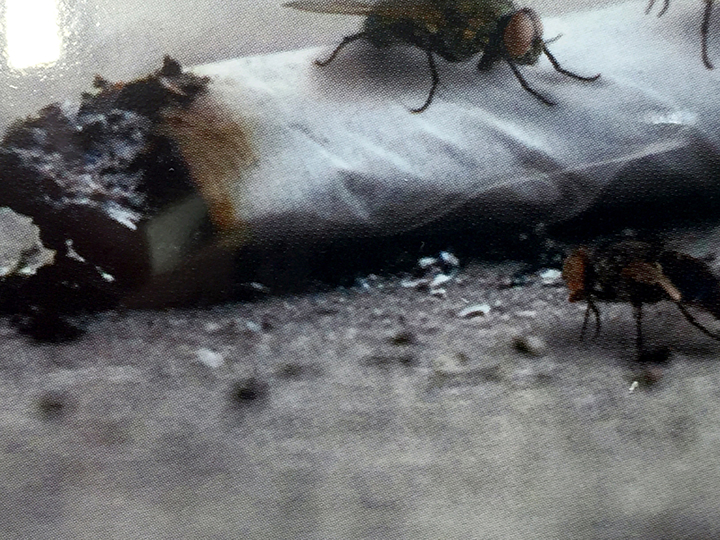JOSH BITELLI – STOPTOBER
2016-09-12To understand what advertising means is dependent on finding out how they mean, and analysing the way in which they work. In the case of advertising materials distributed by the state, this how, or their form, is the way in which that policy is delivered to the electorate – it’s about mediation and contact. Content is often interchangeable and cannot be separated from its form. The deceptive mythology of advertising requires us to believe that an advert is simply a vehicle for a message even when this message is clearly untrue.
The 600 images covering the floor of Union Centre are taken from records of the Department of Health’s most pressing concerns. They are reproduced here from an extensive archive of pamphlets, posters, stickers, envelopes, beer mats, post-cards and stamps, all of which have been photographed through their archival-grade, plastic sleeves. Omitted from this collection are the materials that do not fit so easily within the medical archive and museum: the televised ads, large format prints, instagram images or posts by Public Health England’s ‘obesity’ twitter. ‘Their very existence in more than one medium gives them a sort of independent reality [linking] them to our own lives’.
The scale of the influence of these campaigns, and how this then effects doctor-patient relationships, is yet to be adequately examined. Advertisements work to ‘translate statements from the world of things’2: flies equate to rotting flesh, degradation, horror and abjection, they are decomposers and feed on faeces or the dead. They are usually repelled by smoke but here, through photomontage techniques, the smoke leaving the cigarette is like a soul leaving the body. Our senses are disrupted by this rearrangement of images and possibility is mistaken for actuality.
Exhibition runs through to October 22nd, 2016
UNION
94 Teesdale Street
London
E2 6PU
